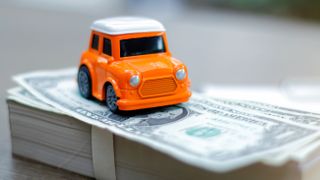The survey, which defined an excellent credit score as 720+, and a fair credit score as sitting within the range of 620-659, provides a stark illustration of the financial advantages that looking after and, if necessary, repairing your credit (opens in new tab) can have when borrowing. With the average FICO score in the US rising to 711 (opens in new tab) last year, even a small improvement in the typical Americans credit standing could lead to huge savings when it comes to car finance, and other types of loan, including mortgages (opens in new tab).
New car or used?
At the same time, the report (opens in new tab) revealed that the average interest rate you can expect to pay for a new car has dropped to 3.45%, one of the lowest points in the past three years. And with the average rate that you’re likely to be charged for a used-car loan sitting at 3.99%, loan costs for new cars are around 14% cheaper than if you buy a second-hand car using finance. Nevertheless, with the pandemic causing vehicle usage to slump and household finances to tighten, sales of used cars increased (opens in new tab) in 2020; on the flipside, overall sales of new cars were down nearly 15% from 2019.
Where to get your auto finance
While a drop in sales might normally see prices fall in response, reduced car production due to lockdowns saw supplies tighten and kept transaction prices high. As a result, the decision over where to source auto finance has actually become even more important than before, and can make a huge difference to what you can expect to pay overall. According to the data, car manufacturers are far and away the best place to start any search for finance, with a typical interest rate of just 1.3% almost two-thirds below the average rates you would pay across the market overall. Credit unions are usually the next-best option for new cars, with average rates currently at 2.63%, while they are the outright best option if you want a loan for a used car, typically charging 2.92%. Loan costs can then be expected to rise fairly dramatically if you approach a national bank (4.1% for new cars, and 4.82% for used), regional bank (4.63%, 5.23%), or a community or small bank (4.59%, 5.52%).
Is now a good time to buy?
If you have a choice over when to buy a new car, as opposed to the frequency of your roadside assistance (opens in new tab) call outs making it an absolute must, making the most of market conditions is key. As to whether there’s room for further improvement in auto finance deals, or the possibility that the market might start to shift the other way, Mike Morgan, Professor of Practice, at the College of Business & Economic Development – The University of Southern Mississippi, believes that competition could still favor buyers going forward. “Considering the supply constraints and stubbornly high prices, I think one way that dealers and manufacturers move inventory is with aggressive financing deals. With interest rates so low, banks have money they need put to work. U.S. savings rates have been unusually high because people are staying home and not spending money. Couple the savings rate with the stimulus checks (opens in new tab) (which so many people just socked away in a savings account) and you have a large segment of consumers awash in liquidity. I think banks (opens in new tab) will aggressively court buyers who can put down a sizable down payment. So yes, I see aggressive financing deals and continuing high prices.”
